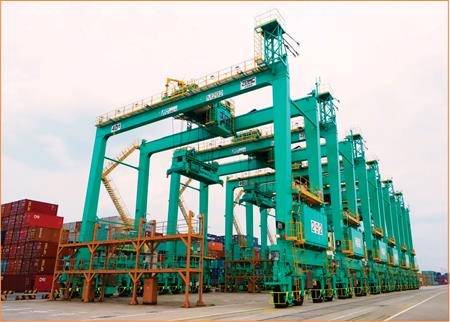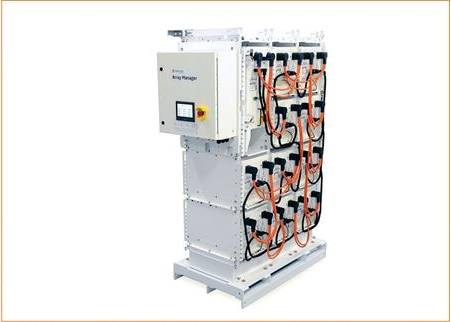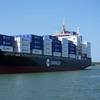Yidong Terminal has ordered nine additional retrofit hybrid rubber-tired gantry cranes (RTGs) produced by integrator CCCC Shanghai Equipment Engineering (CCCCSEE) for Shanghai Zhenhua Heavy Industry Co. Ltd. (ZPMC), to be installed in Port of Shanghai.
This addition will bring the total number of such hybrid cranes to 21 in the Port of Shanghai, spanning three terminals: Yanshan, Waigaoqiao and Yidong – the largest installations of hybrid electric port equipment in the world.
The cranes will be powered via environmentally friendly lithium ion polymer Energy Storage Systems (ESSs) supplied by Corvus Energy.
Approximately 10 percent of diesel fuel emissions from cargo handling equipment at ports are emitted by RTG cranes, Corvus said. The use of battery hybrid technology for RTGs lessens the environmental impact of crane operations by reducing fuel consumption and harmful fossil fuel emissions.
How Hybrid Cranes Save Fuel:
- Regenerative braking energy is captured and stored as electricity when a container is lowered. This recaptured energy is directed to the Corvus ESS, reducing the amount of power required from the generator.
- In the conventional RTG configuration, the diesel generator undergoes periods of inefficient sustained idling, resulting in unnecessary fuel usage. With the Corvus ESS in place the diesel generator is shut down during traditional idling times, allowing the RTG to operate on “full electric” battery power.
Corvus said cranes equipped in this manner are proven in the field to operate at optimal efficiency. Unlike conventional diesel electric port cranes, the CCCCSEE hybrid version is powered primarily from the Corvus ESS resulting in fuel savings of up to 65 percent with the added benefits of reduced operating costs with less greenhouse gas emissions and lower noise levels at the terminal.
According to accepted standard emission calculations, an energy efficiency program that reduces greenhouse gas emissions by 4,700 metric tons of CO2 per year has the same impact as removing 1,000 vehicles from the road. The 21 RTGs operating with Corvus ESS technology will eliminate 5,300 metric tons of CO2 per year equal to removing 1,143 cars from the road each year.
















